We are now in the middle of a string of Last Suppers, but they are of a different mettle to those which came before. Leonardo made a bold statement with his imposing fresco, but some of the faces might have been taken from Leonardo’s grotesque sketches, and the almost mathematical spacing of the disciples along the table was very formalised, but meant that none of the disciples had their backs to the viewer. These next two artists made their Last Suppers much more believable.
Vicente Juan, known as Juan de Juanes was born in Fuente la Higuera, Valencia, in 1523. His father was an artist who was influenced by Raphael, and Vicente followed in his father’s style, but he has infused some Italian influence into his paintings. He uses bright colours combined with a high technical skill, and is one of Spain’s best known and most liked religious painters. In Spain, this is the definitive Last Supper, not Da Vinci’s. Each disciple has a halo with his name painted within it. Only Judas has no halo, and he is at the far right with his body half turned away trying to hide the purse containing the bribe to betray his master. Their faces are those of real people filled with adoration as Christ explains the Eucharist to them. Juan was the forerunner to most of the Spanish religious painters and sculptors whose continuing work you can see in all parts of Spain.
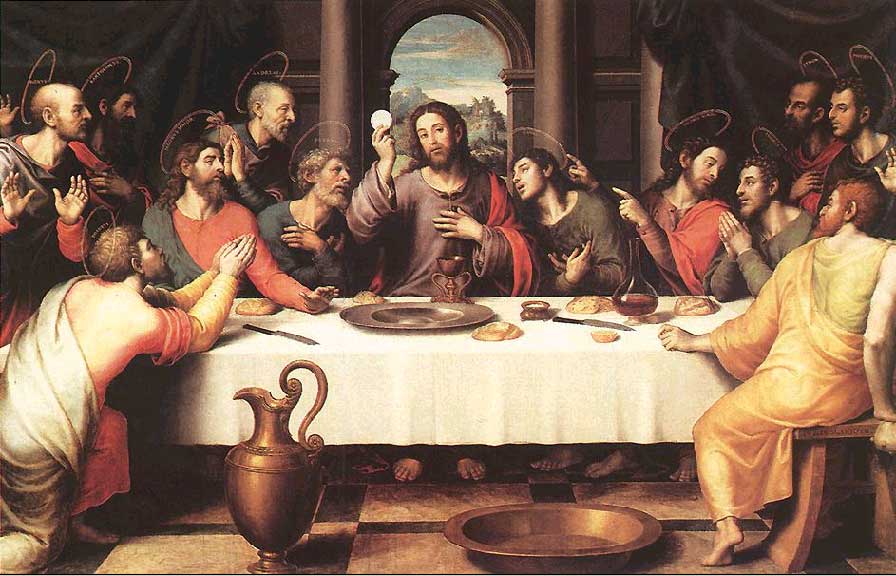
His family was devout catholic, and Juan never painted a profane subject. Before he began each painting he took Holy Communion, and the progress of the painting was accompanied with solemn prayers and fasts. He was never short of patronage from the church, and his patrons included the Jesuits, Dominicans, Minims, Augustinians and Franciscans. Juan’s style is the one adopted by many of Spain’s religious painters and can be best seen in the Sagrada Familia shown below. All his surviving work is in Valencia, and his work was continued by his son and two of his daughters who were all painters in their own right. His life was successful and profitable, but not very interesting. His Last Supper now hangs in the Museo Del Prado, Madrid.
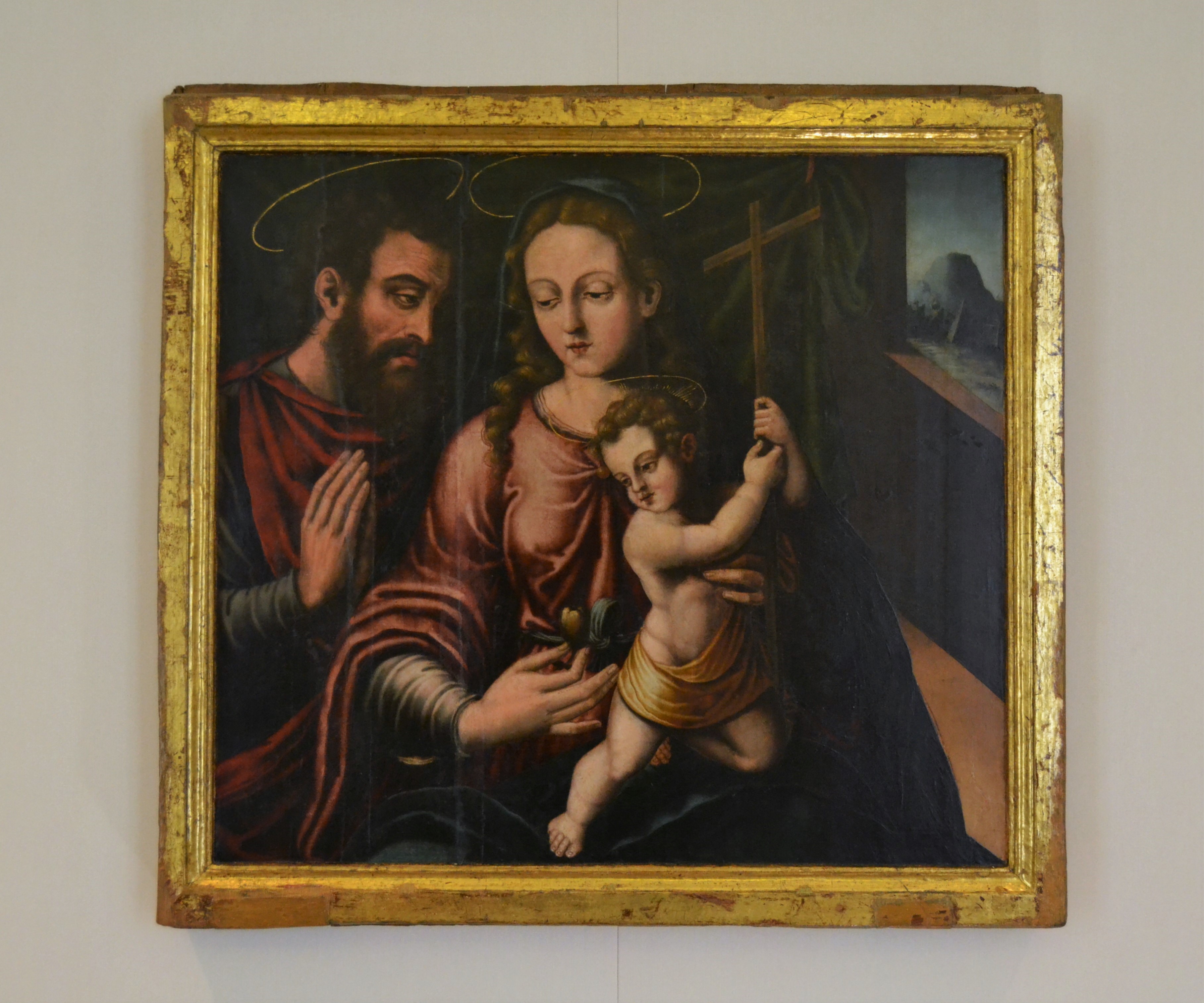
Sacred family. Holy Family for the sacristy in the Cathedral of Valencia.
The next artist we look at lived his life a little on the wild side. And the lifestyles of the two artists together are like chalk and cheese.
Valentin de Boulogne was born in Coulommiers, France. His father and uncle were both artists, and he probably trained with them before setting out on his own. He first moved to Paris, but he soon learned that all the action was in Rome. He arrived there in 1620 and just missed meeting the art world’s second most famous bad boy. (Adolf Hitler has first place.)
Michelangelo Merisi da Caravaggio’s work emphasized the common humanity of the apostles and martyrs and rejected the Mannerism that had preceded him. His paintings were three-dimensional, showing real people with expressions that displayed the full range of human emotions. He had initiated the Baroque era, and his style had attracted a large following from all parts of Europe. However, his lifestyle was as famous as his artwork, but for all the wrong reasons. Caravaggio had fled Rome just a few years before Valentin arrived, but he had left a legacy worthy of Rome’s lurid past.
As early as 1590 Caravaggio had a reputation for street brawls amongst gangs of young men in Milan. He committed a murder there and had to flee to Venice and then to Rome. Less than a decade after arriving in Rome, he was arrested for beating a nobleman with a club and he was frequently imprisoned for brawling. After one such spell of imprisonment, he knuckled down to painting for three years, but he was arrested in 1603 for defamation and sued. His imprisonment followed, but the French ambassador, who was his patron, stepped in and had him put under house arrest instead.
But it was in 1606 that he stepped over the line between saint and sinner. He had argued several times with Ranuccio Tommasoni, a gangster and the son of a wealthy local family, but this dispute ended in a duel in which Tommasoni was killed. It’s not clear whether his death was intentional, but Caravaggio was trying to castrate his opponent with his sword, and I don’t think that Tommasoni would have held still for that. Caravaggio was sentenced to beheading for murder and an open bounty was declared, enabling anyone who recognized him to legally carry the sentence out. Caravaggio was forced to flee from Rome to Naples, then Malta and finally Sicily.
 Simon Vouet, self portrait.
Simon Vouet, self portrait.
Valentin de Boulogne joined the studio of Simon Vouet, who was at that time very well established in Rome. Whilst Valentin was studying with Vouet, the latter was elected to be president of the Accademia di San Luca and was commissioned to paint an altarpiece for St Peter’s in Rome. Things could not have looked better for Valentin, and if he had stayed with Vouet, his life might have gone in a very different direction. Summoned in 1627 by the King of France, Vouet became Premier peintre du Roi, and was commissioned to paint portraits and decorate the mansions of royalty for the rest of his life. But Valentin chose a different route to immortality.
Valentin arrived in a Rome that was full of Caravaggio imitators, both in lifestyle and in art. He was one of many ex-pats (no offence intended) who came for one reason, but stayed for something else entirely. It was not long before he was initiated into the Bentvueghels (Dutch for “Birds of a Feather”) a group of mostly Dutch and Flemish artists who were known for their drunken celebrations and near worship of the Roman god, Bacchus. The initiation ceremony was usually paid for by the initiate, and consisted of a piss-up that could last for a whole day and night. For those who could still walk, the conclusion to the day was to stagger together to the Church of Santa Costanza, which was popularly known as the Temple of Bacchus, and surround the sarcophagus of Constantina, the eldest daughter of Roman emperor Constantine the Great, which had sculpted scenes depicting Bacchus on its sides. Here they raised a glass to toast the old Roman god before going home. Because of his Christian name, Valentin was given the nickname inamorato, meaning one in love.
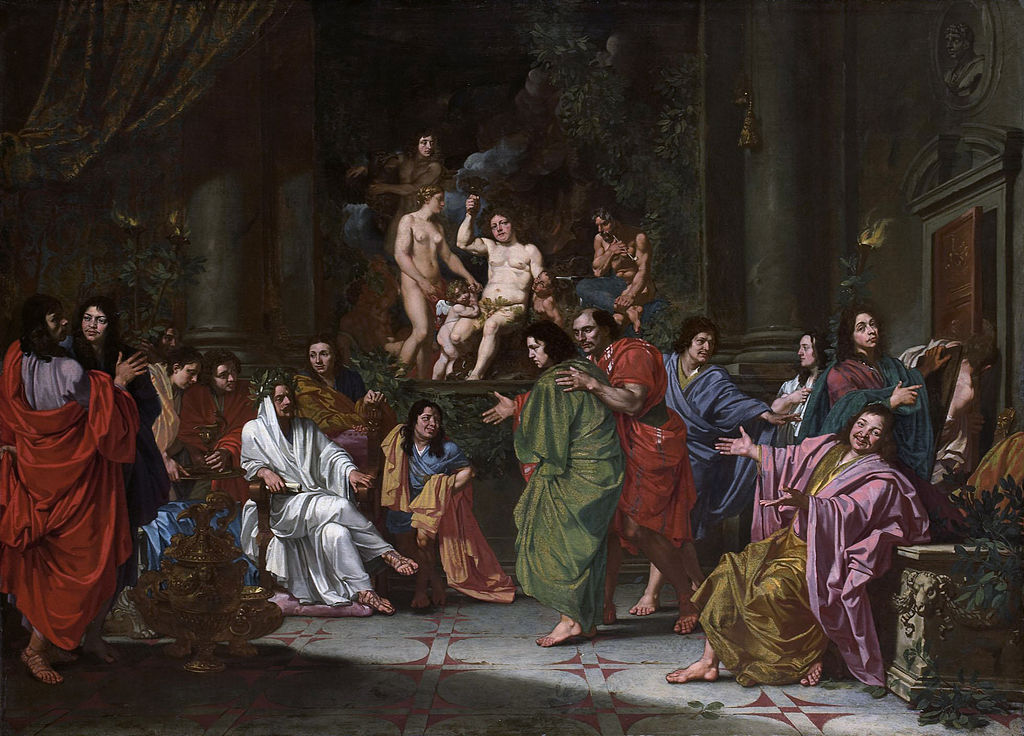 Initiation into the Bentvueghels.
Initiation into the Bentvueghels.
Perhaps I have painted a rather gloomy picture of Valentin and his friends, because they actually maintained a very high standard of art, despite their bad behavior off-canvas. Valentin’s social life was in the bars and dives of Rome, and this shows in his artwork. For me, the ones who came before, and some who came after, lived in an ecclesiastical bubble dictated by their patrons’ purse strings. Valentin stepped outside these confines and showed the realities of life in the streets, the life that Jesus might have seen. The Fortune-teller is a beautiful example of his mastery of this theme.
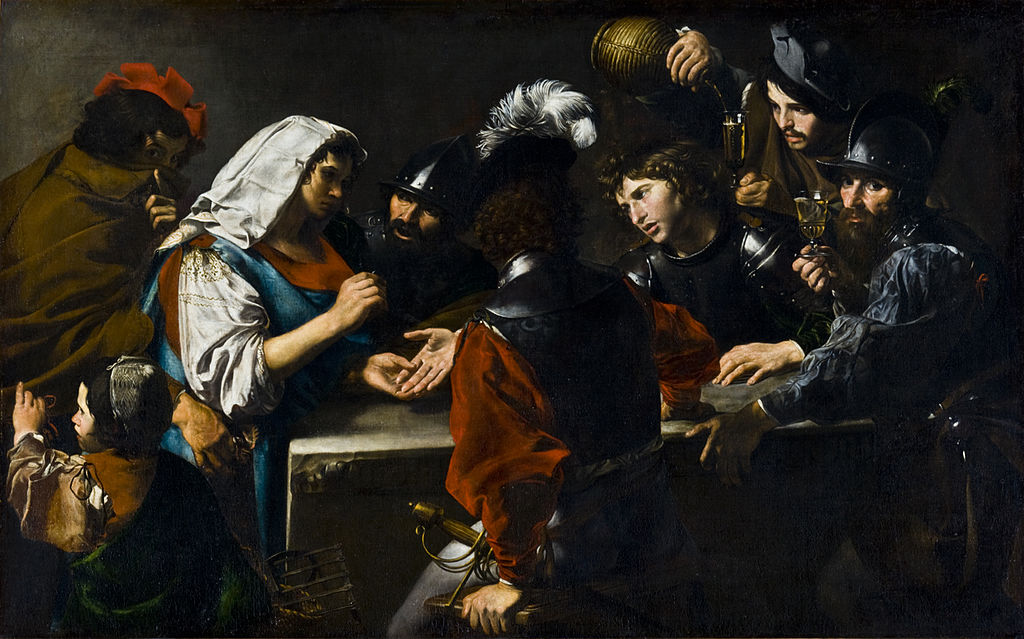
A gypsy fortune teller is entertaining a group of young soldiers unaware that her purse is being stolen by a thief. The thief looks at the viewer with a conspiratorial eye, unaware that his pocket is being picked by a child. The intrigue apart, the sheer mastery of light, the credible emotions on the faces of the soldiers and the detail in the painting is stunning. We are so accustomed to photography and cinema now that we see this and think little of it, but in 1630 it was amazing.
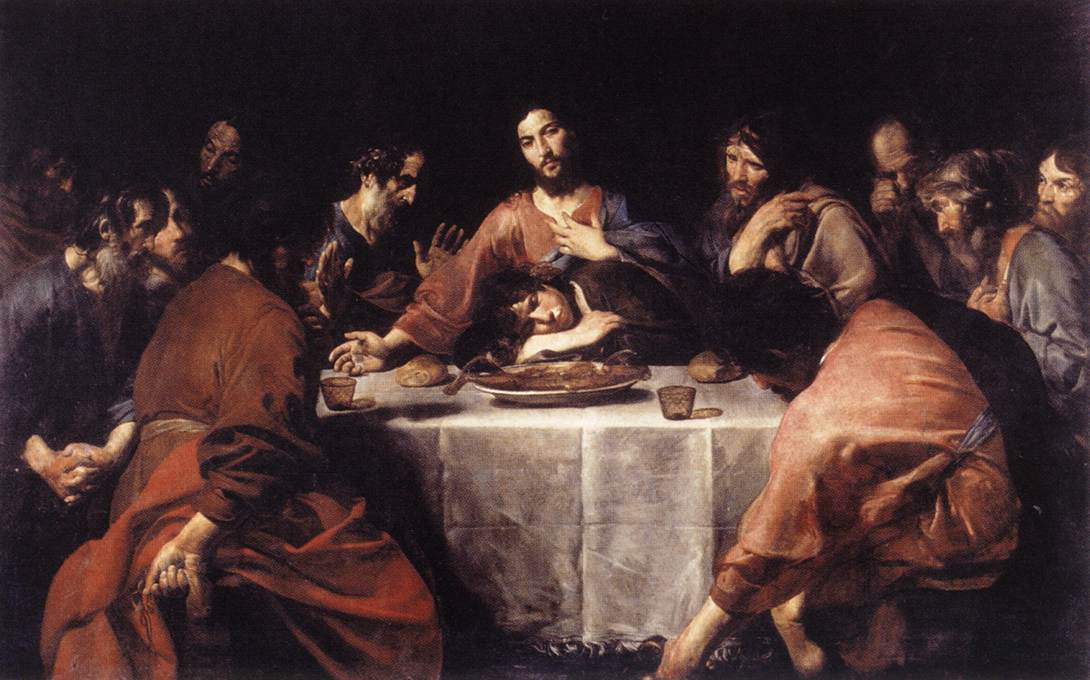
So now we come to the Last Supper by Valentin. He has moved Judas to this side of the table on the left, and painted him surreptitiously holding a purse of gold behind his back. The faces of the disciples are entirely credible and their clothes are those of men who have spent the last few years on the road preaching. Valentin masterly paints the emotion of shock and disbelief that the real disciples must have felt. To me, this is a high point in the art of the suppers, and is only surpassed much later on. Many of his seventy or so paintings depict faithfully the whole range of emotions known to man and he could have become one of the great artists of the era.
Is there happy ending? Well, he may have been happy at the time, but the tragedy is that Valentin de Boulogne died at the age of 41. His cause of death … he had been on a drinking binge all day and he decided to round off the evening by bathing in the freezing cold waters of the Fontana del Tritone on Piazza Barberini. During the following few days he developed pneumonia and died.
There may be a lesson here, but who am I to preach.